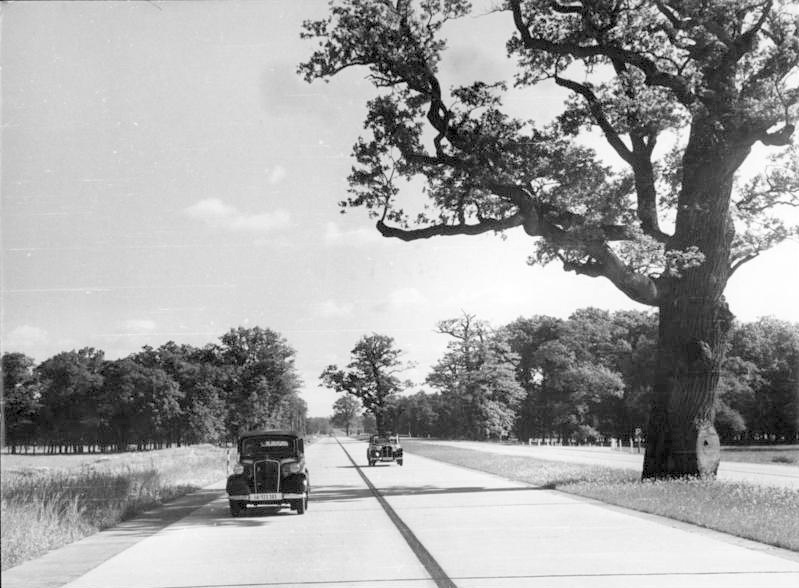
Photo courtesy upload,wikimedia.org.
President Eisenhower declared that a network of highways was "essential to the national interest". Not only was he concerned about people getting to and from work, he was also concerned about Americans being able to evacuate their cities quickly in the event of an atomic attack, a real possibility in the time of the Cold War.

Reichsautobahnen courtesy upload.wikmedia.org.
Eisenhower, who had been stationed in Germany as a general during the Second World War, was impressed with their system of high speed motorways called the Reichsautobahnen. Why not create a similar highway system in America? The 41000 mile highway infrastructure would include highways with at least four lanes and have overpasses and underpasses for merging traffic. The problem was getting someone foot the bill for the building of the interstate highway system. The car, tire and gas companies managed to convince the federal government to finance most of the project (90%). The government collected the money by raising the gas tax from 2 cents to 3 cents.

Postwar suburbia courtesy amhistory.si.edu.
When the new highways opened, the results were almost immediate. Suburbs sprung up all over the United States, including the famous Levittown, Pennsylvania. The nation's rapid growth appeared to be a good thing until city residents abandonned the inner core in exchange for the suburbs and each downtown died a slow death.

Levittown, Pennsylvania courtesy upload.wikimedia.org.
As early as 1959, a protest was held to stop the building of a freeway in San Francisco. More followed in the 1960's in cities like New York City, Baltimore, Washington D.C. and New Orleans. In the end, many cities had highways that ended abruptly called "roads to nowhere".
Today, the Interstate Highway System is composed of more than 46,000 miles of roads. While some of the original roads have been abandonned, many others have been added. President Eisenhower's bill changed the landscape of America.

Map circa 2003 courtesy www.indianatrails.com.
Note: For more information, read Divided Highways: Building the Interstate Highways, Transforming American Life (Tom Lewis).
For more information on America before the invention of the paved road, visit my blog post "Horatio's Drive: America's First Road Trip at: http://alinefromlinda.blogspot.ca/2012/08/horatios-drive-americas-first-road-trip.html
No comments:
Post a Comment